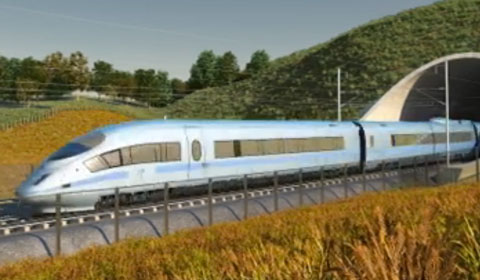Design build operate maintain DBOM

|
Contents |
[edit] Outline
Design build operate maintain (DBOM, also referred to as ‘turnkey’ procurement and ‘build-operate-transfer’) is a variation of the classic design and build method of procurement in which the main contractor is appointed to design and construct the works. This contrasts with the traditional procurement route, where the client first appoints consultants to design the development and then appoints a contractor to construct the works.
In DBOM, in addition to being responsible for the design and construction of the works to the employer’s requirements, the contractor is also responsible for operating and maintaining the completed facility. The operation and maintenance period can span as much as 20 to 30 years during which the contractor is said to have the ‘concession’ and is responsible for the safe and smooth operation of the facility, and may benefit from operational income. The facility itself however remains the property of the employer.
In the case of infrastructure that does not produce operational income, such as a non-toll motorway, the contractor is paid fees by the employer in the form of availability payments or shadow tolls (see below).
DBOM is commonly used for projects such as shopping and leisure centres, light rail, motorways, tunnels, bridges and other infrastructure. DBOM contracts are typically awarded through competitive bidding under a transparent tender process. Projects are procured from the private sector in a single contract while works are typically financed by the government (although employers can also be from the private sector). DBOM contracts are commonly a form of public private partnerships (PPP).
As work progresses, the employer pays the contractor for undertaking the works; maintenance is also paid for by the employer at an agreed price. At the end of the agreed maintenance and operation period, the contract may be renewed or the responsibility for operation and maintenance may revert to employer. Whether the contract is subject to renewal is usually stated at tender stage.
[edit] Pros and cons
Advantages include:
- A single source of responsibility for usually disparate functions of design, construction and maintenance.
- The DBOM contractor can establish a long-term maintenance programme up-front, plus estimated costs.
- Knowledge of methods and materials to be used allows the DBOM contractor to develop a tailored maintenance plan that anticipates and addresses potential issues thereby reducing risk and costs.
- It relieves the owner of the time and trouble spent on operational and maintenance issues.
Disadvantages of DBOM include:
- Long term needs must be specified up front to enable correct specifications to be drawn up.
- Owners lose much of the control they usually have with traditional contracts.
- Great care is needed to ensure correct standards are specified for design, construction and maintenance, especially if owners are not accustomed to the process
- Much risk is placed on the contractor but this is usually reflected in its price.
- Prices can turn out to be excessive in the long term (see PFI for more information)
[edit] Availability payments and shadow tolls
With availability payments, the employer must pay the contractor the same fees whether the facility is used or not. Such projects are therefore risky to embark upon but may nevertheless be in the employer's interest.
Shadow tolls are applied where, for whatever reason, there are no tolls exacted on the project in which case the employer pays the operator a per-vehicle amount as compensation for operating and maintaining the facility.
[edit] Related articles on Designing Buildings Wiki
- Availability payments.
- Build, own, operate and transfer (BOOT).
- Design and build.
- Design and build - pros and cons.
- Design, build, finance, maintain DBFM.
- Design Build Finance Operate Maintain DBFOM.
- Design build operate (DBO).
- Government Construction Strategy.
- Infrastructure UK.
- PF2.
- Procurement route.
- Private Finance Initiative.
- Public Private Partnership.
- Public procurement.
- Renovate, operate, transfer (ROT).
- Shadow tolls.
Featured articles and news
RTPI leader to become new CIOB Chief Executive Officer
Dr Victoria Hills MRTPI, FICE to take over after Caroline Gumble’s departure.
Social and affordable housing, a long term plan for delivery
The “Delivering a Decade of Renewal for Social and Affordable Housing” strategy sets out future path.
A change to adoptive architecture
Effects of global weather warming on architectural detailing, material choice and human interaction.
The proposed publicly owned and backed subsidiary of Homes England, to facilitate new homes.
How big is the problem and what can we do to mitigate the effects?
Overheating guidance and tools for building designers
A number of cool guides to help with the heat.
The UK's Modern Industrial Strategy: A 10 year plan
Previous consultation criticism, current key elements and general support with some persisting reservations.
Building Safety Regulator reforms
New roles, new staff and a new fast track service pave the way for a single construction regulator.
Architectural Technologist CPDs and Communications
CIAT CPD… and how you can do it!
Cooling centres and cool spaces
Managing extreme heat in cities by directing the public to places for heat stress relief and water sources.
Winter gardens: A brief history and warm variations
Extending the season with glass in different forms and terms.
Restoring Great Yarmouth's Winter Gardens
Transforming one of the least sustainable constructions imaginable.
Construction Skills Mission Board launch sector drive
Newly formed government and industry collaboration set strategy for recruiting an additional 100,000 construction workers a year.
New Architects Code comes into effect in September 2025
ARB Architects Code of Conduct and Practice available with ongoing consultation regarding guidance.
Welsh Skills Body (Medr) launches ambitious plan
The new skills body brings together funding and regulation of tertiary education and research for the devolved nation.
Paul Gandy FCIOB announced as next CIOB President
Former Tilbury Douglas CEO takes helm.
UK Infrastructure: A 10 Year Strategy. In brief with reactions
With the National Infrastructure and Service Transformation Authority (NISTA).






















